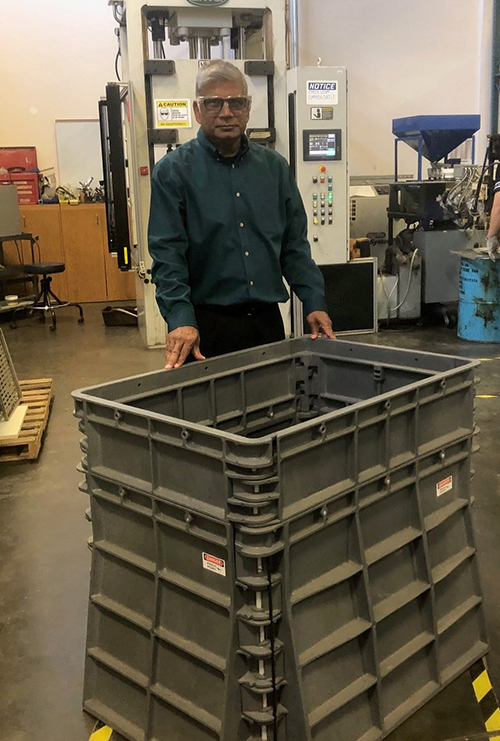A new type of utility vault invented by researchers in the University of Alabama at Birmingham School of Engineering and commercial partner Vista Engineering, has the potential to revolutionize the way utility companies operate.
Brian Pillay, Ph.D., a professor in the Department of Mechanical and Materials Engineering, Raymond Thompson and Dustin Nolan from Vista Engineering along with a team of academic and industry collaborators, developed the vault, which is now being manufactured with a projected demand of 50,000 units per year.
The vault is being used as a replacement for the in-ground spaces used for utility workers to access pipes, cables and other materials that run underground—from household water meters to large junctions for telecommunication equipment. Traditionally, these vaults have been made of concrete, which provides the necessary strength but requires considerable expense during installation, maintenance and repairs. Just one concrete vault requires a team of workers and special equipment to install or remove a unit.
Pillay says that modern composite technology provides a better product for our future infrastructure needs. “Concrete vaults have served their purpose well over the years, but after several decades, we are beginning to see the drawbacks,” Pillay explained. “What happens when the concrete eventually breaks? What happens if a vault is incorrectly installed? The manpower and equipment needed to replace a damaged vault might require multiple teams of workers and a lift. When I saw a row of these vaults lined up at a plant, I immediately recognized the potential we have with composite materials to design a better product.”
Working with a team in UAB’s Materials Processing and Application Development (MPAD) facility and Vista Engineering, the team designed a prototype of a vault that is made of several lightweight, collapsible parts. The individual parts are assembled and collapsed for transport and, once on site, can be snapped open by one or two people in less than a minute.
“Instead of a truck carrying one or two concrete vaults that require a crane to lift, one person can take eight of these composite vaults on a pickup truck,” Pillay said. “The savings in manpower alone are considerable. If one portion of the vault gets damaged, a single worker could go out and replace just that part. No need to send a crew to replace the whole thing.”
Using the prototype developed at the MPAD, Pillay’s team began collaborating with industry partners that included Vista Engineering, TAN Composites, and Longleaf to ramp up the project into a commercial product for telecom vaults.
Commercial vaults are manufactured at different tiers, depending on the use. Pillay’s team was tasked with a tier 15 product, which would withstand a 15,000-pound load on the vertical walls and 2,400 pounds on the lateral sections. The team realized that their materials would allow them to build a much stronger vault with minimal increase in production cost.
“These composite materials are strong enough for use as a tier 22 vault,” Pillay said. “The vertical walls are designed to withstand 22,500 pounds of load and have been tested at up to 33,750 pounds. So even with all of the savings in manpower and production costs, we aren’t sacrificing any of the strength compared to the old concrete vaults.”
Once testing was complete, the group teamed up with a manufacturer in Ohio to build 2,000 units for a commercial telecom company, with a projected demand of 50,000 units per year going forward. Current productions is at 24.000 units per year and is expected to increase to 48,000 per year, early 2023 when new dies are delivered.
“When you consider the growing needs of telecommunications networks, particularly with the expansion of 5G networks across the country, the need for a cheaper more efficient method of producing and installing these vaults is obvious,” Pillay said. “If more companies take advantage of composite technology, it could become a game-changer for a variety of industries.”
